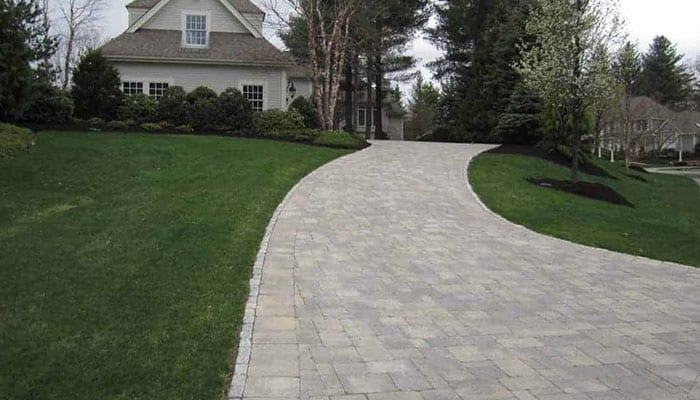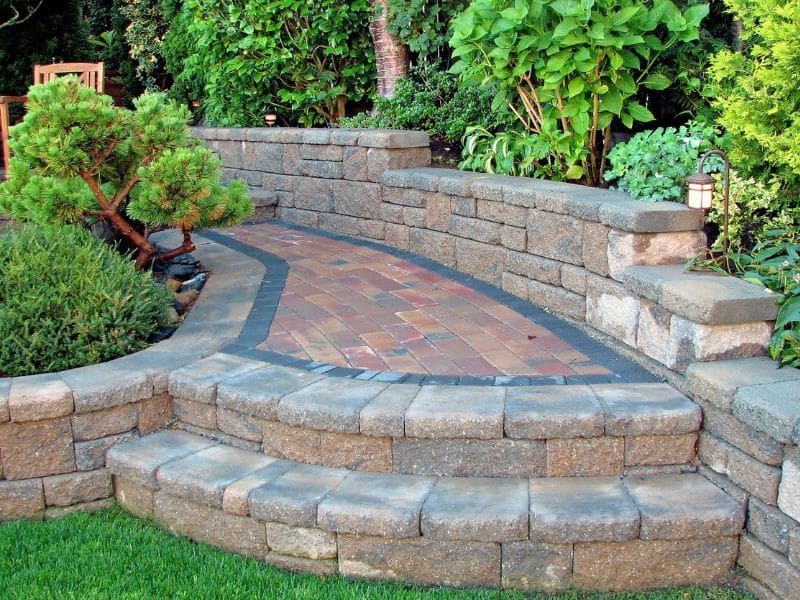How to Design Landscape Lighting: 10 Pro Tips (2024)
Introduction
Designing landscape lighting can transform your property, enhancing both beauty and safety. Whether you’re a homeowner or a commercial property manager in Merrimack Valley, understanding how to design landscape lighting can save you time and elevate your outdoor space.
For quick answers:
- Importance: Adds visual drama and showcases your best landscape features.
- Curb Appeal: Highlights architectural elements and draws attention to special plants.
- Safety: Helps prevent accidents and deter potential intruders.
Developing a good landscape lighting plan involves strategic placement and selection of fixtures. It’s not just about shining a light on things; it’s about creating a welcoming, secure, and beautiful environment.

Planning Your Landscape Lighting Design
Before you start buying fixtures and bulbs, take a step back and plan your landscape lighting design. A little preparation can save you a lot of headaches down the road.
Walkthrough Your Property
First, grab a notepad and pencil. Do a thorough walkthrough of your property. Think about the areas you want to highlight. Is it the beautiful flower bed, the majestic tree in your front yard, or the cozy patio where you entertain guests?
Tip: Walk around at different times of the evening to see how natural light changes and where shadows fall.
Envision Your Ideal Lighting
Now that you’ve done your walkthrough, start envisioning how you want your space to look. Do you want to create a dramatic effect with uplighting on your trees? Or maybe you prefer the subtle elegance of moonlighting?
For example, imagine you’re hosting a dinner party. You might want soft, spread lighting around the dining area to create a warm, inviting atmosphere. Meanwhile, accent lighting can highlight a beautiful statue or water feature in the background.
Use a Notepad
Sketching your ideas on a notepad helps bring your vision to life. Draw a basic outline of your yard. Include structures like your house, driveway, and any large trees or shrubs. Mark the spots where you want to place lights.
Example: If you want to illuminate a pathway, draw the path and mark where each light will go. This will help you determine how many fixtures you need and where to place them for optimal effect.
Consider the Techniques
Think about the different landscape lighting techniques you might use:
- Accent or Spot Lighting: Focuses a beam on specific features like flowers or statues.
- Grazing: Highlights textures of surfaces like tree bark or stone walls.
- Shadowing: Creates intriguing shadows on walls or other vertical surfaces.
- Silhouetting: Places lights behind objects to create a silhouette effect.
- Downlighting: Mounts lights high up to cast broad illumination over large areas.
- Cross Lighting: Illuminates from multiple angles to show off three-dimensional forms.
- Uplighting: Aims lights upwards for dramatic effect, perfect for trees or statues.
- Spread or Diffused Lighting: Covers larger areas with soft, low-level light.
- Moonlighting: Simulates moonlight filtering through tree branches.
Real-Life Example
Consider a homeowner who wanted to highlight their garden’s focal points. They used spotlights for their favorite flower beds, creating “sparkling islands of interest.” They also installed downlights in trees to create a warm, inviting ambiance for evening gatherings on their patio.
Tools to Help You Plan
If you’re not into sketching, you can use digital tools like the Plan-a-Garden app or iScape. These apps allow you to drag and drop elements onto a virtual plot of your yard. It’s an easy way to experiment with different layouts and lighting techniques.
Final Tips
- Make sure your plan includes the location of the transformer and wire runs.
- Consider wiring options like a daisy chain, T-method, or hub method.
- Ensure all components are compatible to avoid extra trips to the store.
By taking the time to plan, you can create a landscape lighting design that not only looks stunning but also enhances the functionality and safety of your outdoor space.
Next, we’ll dive into choosing the right fixtures for your landscape.
Choosing the Right Fixtures for Your Landscape
Selecting the right fixtures is crucial for achieving the desired effect in your landscape lighting design. Here’s a quick guide to help you choose the best fixtures for different areas of your yard.
Spotlights
Spotlights are versatile and can be used for various purposes. They are ideal for accent lighting where you want to highlight specific features such as trees, statues, or architectural elements.
- Usage: Highlighting trees, statues, and architectural elements.
- Techniques: Uplighting, Cross Lighting, Silhouetting.

Path Lights
Path lights ensure safety along walkways and add a charming glow to your landscape. They are designed to cast light downward, illuminating pathways without causing glare.
- Usage: Lighting pathways, garden beds, and walkways.
- Techniques: Downlighting, Spread Lighting.

Floodlights
Floodlights are powerful and cover large areas. They are perfect for security lighting and illuminating wide spaces. Floodlights can also be used for wall washing, creating a broad, even wash of light on walls or large shrubs.
- Usage: Security, large area illumination, wall washing.
- Techniques: Downlighting, Area Lighting.

Bollard Lights
Bollard lights are sturdy, vertical fixtures that are great for marking driveways and pathways. They stand about 30-36 inches tall and provide a soft, diffused light that enhances safety and aesthetics.
- Usage: Driveways, pathways, and garden borders.
- Techniques: Spread Lighting, Downlighting.

Step Lights
Step lights are essential for safety on stairways. They are typically installed on the risers of steps and provide focused light to each step, making it easier to navigate in the dark.
- Usage: Stairways, multi-level patios.
- Techniques: Downlighting, Area Lighting.

Fountain Lighting
Fountain lighting can transform water features into stunning focal points at night. Underwater lights create a magical effect, while external spotlights can illuminate the water and surrounding area.
- Usage: Fountains, ponds, pools.
- Techniques: Underwater Lighting, Accent Lighting.

Choosing the right fixtures will make a significant difference in how your landscape lighting design turns out. Up next, we’ll discuss various lighting techniques to enhance your outdoor space.
Landscape Lighting Techniques to Enhance Your Outdoor Space
Using the right lighting techniques can dramatically transform your outdoor space. Here are some of the most effective techniques to consider:
Accent Lighting
Accent lighting is all about highlighting specific features in your yard, like beautiful flowers, small shrubs, or statues. Use spotlights to create focused beams that draw attention to your garden’s focal points.
- Application: Flower beds, statues, architectural features.
- Tip: Use controlled, intense beams to create sparkling islands of interest.
Grazing
Grazing involves placing lights close to a textured surface, like tree bark or a masonry wall, to bring out its texture. This technique is perfect for adding depth and interest to your landscape.
- Application: Tree bark, stone walls, wood shingles.
- Tip: Avoid using on smooth surfaces, as it won’t have the same dramatic effect.
Shadowing
Shadowing creates intriguing shadows by lighting an object from the front and below. This technique is great for adding a sense of mystery and depth to your garden.
- Application: Trees, statues.
- Tip: Project shadows onto walls or other vertical surfaces for maximum effect.
Silhouetting
Silhouetting is achieved by placing lights behind and below an object, creating a striking silhouette against the night sky. This technique works wonders with trees and large shrubs.
- Application: Trees, large shrubs.
- Tip: Conceal lights behind the object to create a dramatic silhouette.
Downlighting
Downlighting or area lighting involves mounting lights high up in trees or on structures to cast broad illumination over wide areas. This technique is excellent for security and general illumination.
- Application: Backyard, patios, pathways.
- Tip: Position lights high to mimic natural moonlight for a softer effect.
Uplighting
Uplighting uses lights aimed upwards to create a dramatic effect, similar to theater lighting. This technique is perfect for highlighting trees, statues, and textured walls.
- Application: Trees, statues, textured walls.
- Tip: Bury lights in the ground for a seamless look.
Moonlighting
Moonlighting simulates the effect of moonlight filtering through branches. Place soft light sources high up to cast attractive shadow patterns.
- Application: Trees, large outdoor areas.
- Tip: Use soft light sources to create a gentle, natural effect.
Cross Lighting
Cross lighting involves illuminating an object from two or more sides to reveal its three-dimensional form. This technique is ideal for showcasing statues and architectural features.
- Application: Statues, architectural features.
- Tip: Use multiple light sources to create a striking perspective.
By incorporating these techniques, you can enhance your outdoor space, making it both functional and visually appealing.
Next, let’s dive into some installation tips for DIY landscape lighting.
Installation Tips for DIY Landscape Lighting
Installing landscape lighting yourself can be a fun and rewarding project. Here are some essential tips to get you started.
Transformer
The transformer is the heart of your landscape lighting system. It reduces the voltage from your home to a safer, lower voltage for outdoor use.
- Tip: Choose a transformer that can handle the total wattage of all your lights, plus a little extra for future expansion.
Cables
Cables carry power from the transformer to your light fixtures.
- Tip: Use direct burial cables designed for outdoor use to prevent damage and ensure durability.
Stakes
Stakes hold the fixtures in place and keep them stable.
- Tip: Make sure your stakes are firmly planted in the ground to avoid any wobbling or tilting of the fixtures.
Fixture Housings
Fixture housings protect the bulbs and direct the light where you need it.
- Tip: Choose housings that are weather-resistant and match the style of your landscape.
Bulbs
The type of bulb you choose will determine the brightness and color of your lighting.
- Tip: Opt for LED bulbs. They are energy-efficient and have a longer lifespan compared to halogen bulbs.
Testing
Before finalizing the installation, it’s crucial to test your setup.
- Tip: Connect everything temporarily and test the lights to ensure they’re working correctly and positioned as desired.
Aiming Lights
Properly aimed lights can make a big difference in the overall effect.
- Tip: Aim the lights to highlight key features like trees, pathways, and architectural elements. Avoid direct glare into windows or seating areas.
Burying Wire
Burying the wire protects it from damage and keeps your landscape looking tidy.
- Tip: Bury the wire 6-12 inches deep to avoid accidental cuts from gardening tools. Lay the wire after planting to prevent damage.
By following these tips, you can achieve a professional-looking landscape lighting setup without hiring a pro.
Next, let’s explore some energy-efficient options and innovations in landscape lighting.
Energy Efficiency and Innovation in Landscape Lighting
When designing landscape lighting, energy efficiency and innovation are key. Let’s explore some options that can save you money and reduce your environmental footprint.
LED Lights
LEDs are the future of landscape lighting. They use up to 75% less energy and last 25 times longer than traditional incandescent bulbs. This means fewer replacements and lower energy bills.
- Pro Tip: Choose fixtures with built-in LED arrays for optimal performance and longevity.
Solar Lighting
Solar lights are a DIY-friendly option that eliminates the need for wiring. They use solar cells to charge batteries during the day, providing light at night.
- Fun Fact: Solar lights come in various styles, from path lights to spotlights, making them versatile for any landscape design.
Timers and Photocells
Timers and photocells help automate your landscape lighting, ensuring they only operate when needed.
- Timers: Set specific times for your lights to turn on and off.
- Photocells: Automatically turn lights on at dusk and off at dawn.
Using these devices can significantly reduce energy waste.
Energy Savings
Energy-efficient lighting options like LEDs and solar lights can drastically cut your energy consumption. According to the research, using newer 65- and 120-watt incandescent bulbs can yield up to 25% more light, but LEDs are still the top choice for energy savings.
- Quick Tip: Combine LEDs with timers and photocells to maximize energy efficiency.
By incorporating these innovative and energy-efficient options into your landscape lighting design, you can create a stunning outdoor space that’s both beautiful and eco-friendly.
Next, let’s move on to some frequently asked questions about landscape lighting.
Frequently Asked Questions about Landscape Lighting
How far apart should landscape lights be?
Spacing your landscape lights correctly is crucial for achieving the best coverage. For path lights, a good rule of thumb is to place them about 6 feet apart.
This spacing ensures the path is well-lit without being overly bright. If you’re up-lighting a tree, one light is usually enough for smaller trees, while mature trees might need two.
What is the best color temperature for landscape lighting?
The color temperature of your landscape lighting sets the mood for your outdoor space. At McLeod Landscaping, we recommend using 2700 Kelvin lights.
This provides a softer yellow light that’s perfect for landscape purposes—not too bright, not too warm. It highlights your garden beautifully without overwhelming it.
Do LED landscape lights need a special transformer?
Yes, LED landscape lights require a special transformer. Low and high voltage landscape lighting systems use different transformers.
LEDs generally need a transformer that can handle their specific voltage requirements. Make sure to check if your LED lights are marked as AC/DC compatible, which can simplify the setup.
Next, we’ll explore some practical installation tips for DIY landscape lighting.
Conclusion: How to Design Landscape Lighting
Designing landscape lighting like a pro doesn’t have to be complicated. By following the steps and tips we’ve outlined, you can transform your outdoor space into a beautiful, safe, and inviting area.
At McLeod Landscaping, we’re passionate about helping you achieve the perfect look for your garden, pathways, and home exterior. Our team of experts is ready to assist you from planning to installation, ensuring your landscape lighting is both functional and aesthetically pleasing.
Whether you’re interested in uplighting to highlight your home’s architecture or pathway lighting to improve safety and ambiance, our professionals know exactly what to do. We use high-quality products and proven techniques to ensure your outdoor lighting stands the test of time.
For more information on how we can help you design and install your dream landscape lighting, visit our Residential Landscaping Service Page.
With McLeod Landscaping, your outdoor space will look as stunning at night as it does during the day. Let us help you create a landscape that not only enhances your home’s beauty but also increases its value and security. Contact us today to get started!

